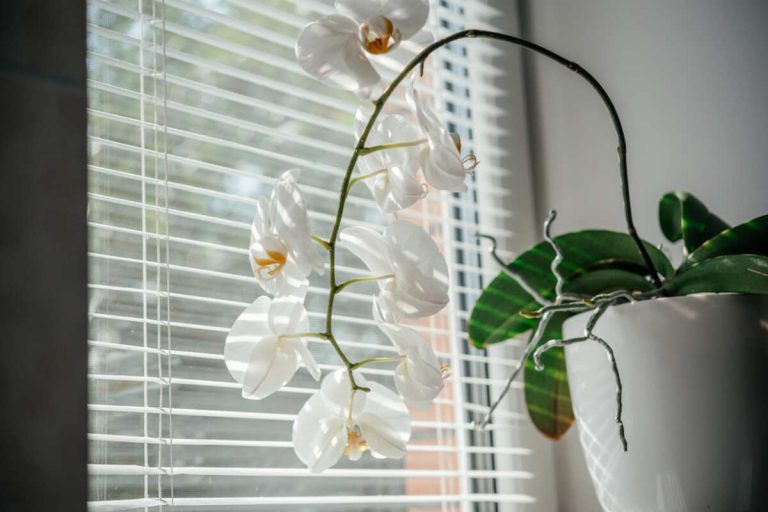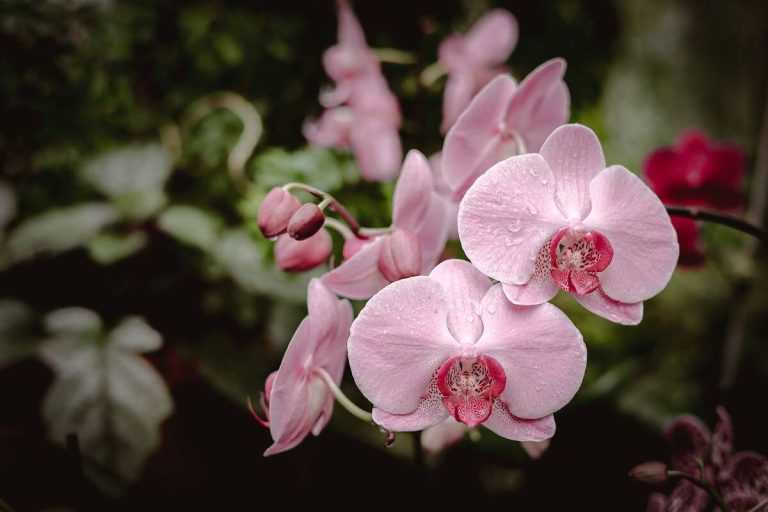How To Maintain An Orchid Plant Off-Season: 7 Easy Tips

When you are fond of gardening and make it a passion, you tend to learn many new things related to it. Growing various plants helps you understand their functionality. As you start gardening, growing flowering plants is a must. So what’s better than an orchid plant?
You must take care of these plants, as they are sensitive and require extra attention, especially when it is not flowering season. Therefore, to help you with this amazing natural beauty, we have compiled a few suggestions that can help your orchid plant survive the storms and grow flowers again in the new season.
How To Maintain An Orchid Plant Off-Season
There are many Orchid varieties, so finding the basics of orchid care during the off-season is very important. The factors that affect this kind of plant should include many things that give them enough humidity, light, or fertilizer.
Maintain The Adequate Light For Orchids
You should take notice of the fact that extreme weather affects orchid flowers badly. Too hot or too cold conditions, for example, would be detrimental to the orchids.
Therefore, you must ensure that when there is summer, you keep these plants indoors so that the sun doesn’t burn them out. In order for many orchids to send up flower spikes, the temperature needs to be cooler. When the temperature drops below 65 degrees Fahrenheit, the orchid blooms gradually. If the nighttime temperatures have been in the mid-60s or lower for a few weeks, orchid plants take this as a sign that it’s time to start making flower buds. So, if you want these flowering plants to bloom, you need to give them at least a few weeks of cooler weather.
In the winter, make sure your orchids get enough sunlight to survive. Usually, plants lack sunlight in winter, which harms the photosynthesis process. So if you are keeping the orchids in the room, ensure that you keep them by the window, which faces the sunlight. It will help the plant survive the harsh weather. Sometimes, you may also use artificial light to fill the gap.
Read more: Best Grow Light For Orchid: 4 Ideal Selections In 2023
Watering The Orchids
Most often, orchids are placed indoors in small pots as they are used for the décor of your house or office. As a result, watering becomes somewhat neglected. But watering once per week is usually sufficient. However, in the summer, you may need to be more frequent than in the winter. Ensure that water irrigates beneath the plant’s leaves, just inside the pot rim, because the plant’s core must stay dry.
To prevent crown rot, wipe away any extra water with a paper towel. Make sure the pot has drainage so that any extra water can drain and that it is not sitting in a saucer of water. Furthermore, providing excessive water might also be dangerous when the plant is in survival mode. Remember, orchids will want more water when the flowers are at their peak. For the off-season, you can also spray water on the plant, which would also be enough.
Repot The Plants During Off-season
It is essential that you repot the plants because this will allow you to examine the orchid plant in detail. Off-season repotting is ideal when the orchid stops blooming. It might sound difficult, as repotting doesn’t happen every day, and one finds it difficult. Therefore, you should acquire the best gardening tools to make your life easier. Every one to two years, aim to repot your orchid into a new pot that is one to two inches bigger than the old one. By measuring the dimensions of its now-larger Orchid’s roots system, you can get a general notion of the size planter required for a new container.
Repotting might seem like an extra thing to do, but make no mistake; it is the best way to increase the life of your plant. There are specific kinds of orchid pots that have huge drainage holes cut into the edges of the container. These “peep holes” not only allow for air circulation but also make it simpler to monitor the overall condition of the plant’s roots. This makes it much simpler to examine the plant’s root system, and it also makes repotting a lot less of a burden by reducing the quantity of soil that needs to be utilized.
Use Some Fertilizers
Every plant needs nutrients if you want it to survive for a long time. Therefore, Orchid fertilizer carries significance when you are planting orchids on your premises. However, the optimum time to fertilize orchids is after the blooms have fallen off. Because it is crucial to realize that this is the time when the plant requires additional attention, now is the ideal time to fertilize.
One time each week, expert orchid gardeners lightly feed their plants. Combining organic and inorganic fertilizers for orchids can produce fantastic results for some orchid gardeners. But ensure the soil is wet when you decide to fertilize the plant. Otherwise, fertilizers making direct contact with the soil will harm it due to the chemicals used in the fertilizers. A tip for you is to use a potting mix that was specifically formulated for orchids in place of dirt. On top of that, you should consider repotting your orchid whenever it needs to be done.
Read more: Can I Use Orchid Fertilizer On Other Plants? The Answer Here
Get Rid Of Rotten Parts
It is obvious that the plant will have some dead parts. As the off-season starts, the orchid plants are also going to have dead leaves and flowers. But you should not worry about it. Some of it will fall from the plant on its own. Furthermore, the critical aspect is that you must look for the rotten parts and cut them because they might spread to the other parts, which can make the orchids die. It’s wrong to use fertilizers on the rotten parts, so don’t look to use fertilizers. The best solution is to cut them. Look to save the plant first, as it will grow again.
Ensure Circulation Of Air
Orchids want clean, moving air. Continuous, mild breezes are essential for their survival. In addition, air movement aids in the evaporation of standing water, which serves as a haven for fungi and bacteria that become trapped during watering. Additionally, ventilation makes orchids more tolerant of harsh light, which would otherwise burn the leaves.
The right amount of light is the single most crucial factor in determining whether or not your orchid will blossom. In the autumn, when nighttime temperatures are cooler, this will also help induce a flower spike to form. Open windows to let in soft breezes in the summer and use an oscillating fan in the winter. Without ventilation, orchids may eventually succumb to disease, decay, or a shortage of carbon dioxide.
Provide Humidity To Orchids
Despite being tropical, orchids don’t necessarily require the same amount of humidity as other plants. However, living in a dry, air-conditioned home might be difficult. Therefore, you may give your orchids the humidity they need with a daily spray or by placing them on a moist bed of gravel. If you choose to use gravel, make sure the pot is not tucked inside the rocks but rests on top. If not, water may seep into the pot and eventually drown the Orchid roots. Be careful when you decide to do it artificially.
Orchid varieties
Moth Orchid
There is a recommendation for you to start your Orchid care journey with Moth Orchid. Because it requires little maintenance and develops rapidly, this is the option that is most suited for folks who are just getting started. It has sprays of flowers in a variety of colors, and speckled or spotted, and their blooming period ranges from three to six weeks.
Phalaenopsis Orchid
Phalaenopsis Orchids can only be found in their natural habitat in the tropical areas of Asia and Australia. These exotic blooms are nearly impossible to cultivate outside of the continental United States or Canada. A single flower spike that has several branches might contain more than twenty blossoms, and each of those flowers can remain beautiful for several weeks.
Conclusion
Indoor plants, being in small pots, need extra care due to their sensitivity. For orchids, you should do the same. Many orchids bloom one or two times every year. Their blooming can endure for 30 to 45 days. If taken care of properly, an orchid plant can live for years or even decades, depending on the species. So, here are some tips for proper maintenance and care of the Orchid plant.









